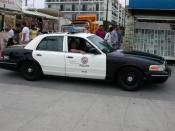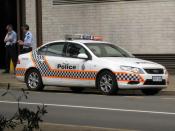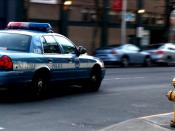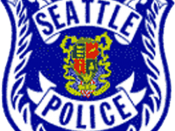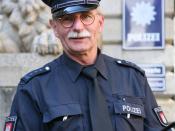History Police Mountain Bike Patrols in the United States-The utilization of mountain bikes by law enforcement agencies has become more commonplace today than ever before. Local, state, and even federal agencies all utilize mountain bikes to so-me degree in their efforts to provide better service to the populations they serve.
The birth of the modern utilization of mountain bikes by a law enforcement agency began in 1987 with the Seattle Police Department starting a bicycle patrol unit. The Seattle Police Department began their patrol in their downtown area due to traffic congestion, which caused a poor response time on the part of police officers. The bike patrol was an immediate success for the police in regards to the response time problem as well as presenting a positive image of officers to the public. Today, there are over 2,000 mountain bike patrol units across the country.
The Utilization of Mountain Bikes by the Lafayette Police Department- Currently, the Lafayette City Police Department only utilizes mountain bikes during Festival Acadiens, Festival International, and during certain undercover operations conducted by the street level ACTION (Attacking Crime Through Involvement Of Neighborhoods) unit.
The use of mountain bikes during the festivals has provided officers with increased mobility in highly congested areas, in addition to allowing timely responses to incidents that occur in or around the areas where the festivals are held (Girard Park and the downtown area). The officers assigned to this patrol have also provided a high visibility presence that acts as a deterrent to crime. The use of mountain bikes by ACTION allows them to do surveillance and provide cover for officers who are functioning undercover during reverse sting buy-bust operations.
Benefits Cost Effectiveness- The police departments that have incorporated bike patrols have found them to be very cost effective. On average, 10-15 bicycle officers can be outfitted for the cost of one patrol unit (please see comparison charts on next two pages). Also, bike patrols can travel farther and faster than officers on foot, as well as enabling officers to reach areas not accessible by a police car.
Community Oriented Policing-Bike patrols offer a practical means to balance the community oriented policing concept of offering the personal touch of a foot patrol officer with the need for mobility. Experience has shown that citizens are more likely to approach a bike patrol officer than even a neighborhood beat police officer. This optimizes community oriented policing efforts. Bike officers have the advantage of being able to utilize all of their senses, including smell and hearing, to detect and address crime. Furthermore, full uniformed officers are often able to approach suspects virtually unnoticed on mountain bikes offering an extremely advantageous element of surprise.
Response to Calls- Bike patrols have proven to be swift and agile in busy urban areas where traffic congestion would delay motorized units. In an effort to verify the validity of this statement, we conducted several timed runs between locations in adjacent zones. The average time from the start of ride to arrival at intended destination approximated four minutes. This was conducted during peak evening traffic periods, which is the most problematic time of day for a rapid police response. This time either met or beat vehicle response time.
Health Benefits for Officers-Police officers assigned to riding mountain bikes are generally found to be in better physical condition than their counterparts assigned to vehicle patrol. The nature of the work demands good eating habits and exercise.
